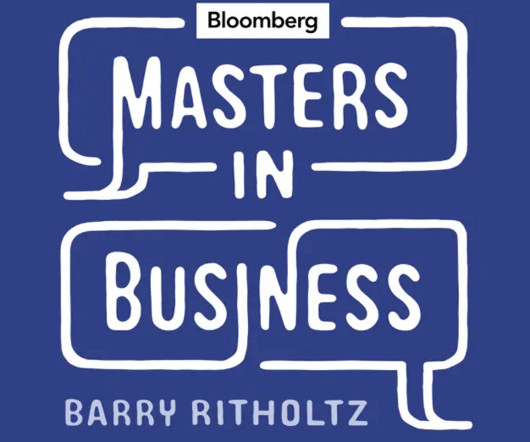Transcript: Greg Davis, CIO Vanguard
Barry Ritholtz
AUGUST 29, 2023
And the ETF, the ETF wrapper, allowed people to get that exposure inexpensively, holding it in a brokerage account. And you had to take on significant duration risk and credit risk just to earn a couple percentage points. Follow me on Twitter @barry_ritholtz until I get back my hacked Twitter account @ritholtz.














Let's personalize your content